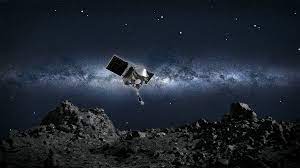Scientists finally studied their first full sample back from asteroids in space, and they confirmed what you would expect – while giving some new insights. The Scientalert report the researchers have released two papers that revealed their first sample analysis from Ryugu, the Rock Space The Hayabusa2 probe visited in February 2019. The team knew the Ryugu would be a common type C asteroid, but still made it a good peek at ingredients from the initial solar system.
Sampling shows the Ryugu has a composition dominated by carbon that is similar to Sun Photosphere (outside shell), such as certain meteorites. It is made of the most primitive material in the solar system, emerging from dust discs formed along with the sun itself. It’s also quite porous, like many asteroids. However, it’s not a neat and neat example. Most type-C asteroids have low albedo (sun radiation reflectivity) 0.03 to 0.09 because of their carbon, but the Ryugu is 0.02. It’s dark even by the cosmic neighbor standards.
Like standing, the existence of this study represents achievement. The first attempt to restore the sample, from Astroid Itokawa in 2010, only captured a small amount of dust. There are still more those who come from Ryugu, but even existing data can help scientists reshape their understanding of the birth and development of the solar system.


No Comments Yet